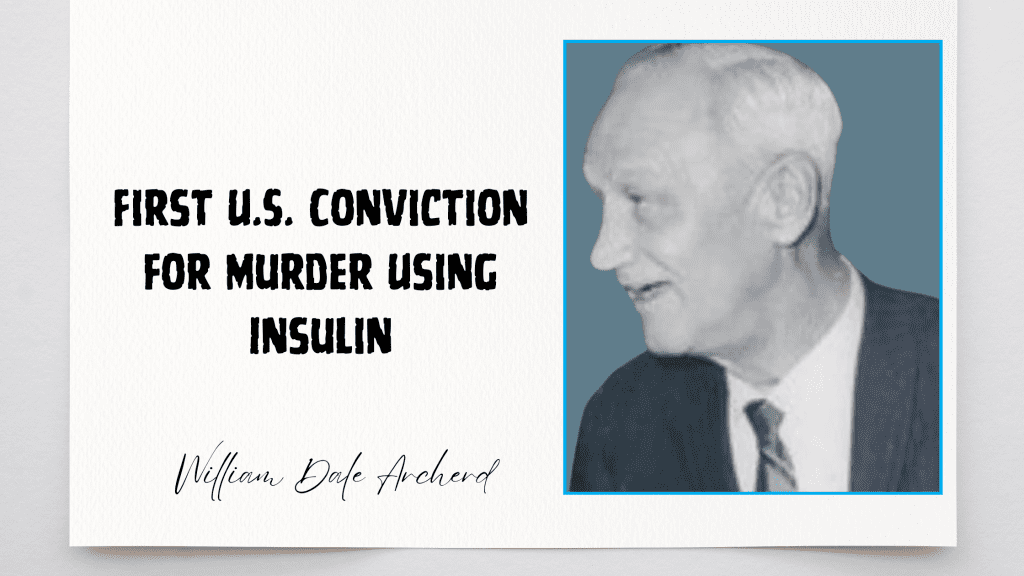Donald J. Beardslee was born in St. Louis, Missouri on May 13, 1943. He was the eldest of three children and grew up with married parents. Unfortunately, his father died when Donald was just 11 years old, leaving his mother to care for the family by herself. Four years after his father’s death, Donald considered a timid and socially awkward child with no history of violence, was sent to military school until the age of 18.
Military Service and Early Crimes
At 19, Donald decided to join the Air Force and worked as an aircraft mechanic. In 1965, he and another serviceman were caught stealing a car. As a result, they were both transferred to Minnesota, where Donald was relieved of his mechanic job and sentenced to a work farm. While at the work farm, he suffered head trauma after being struck by a tree and fell into a coma for some time. After four years in the Air Force, Donald was discharged.
First Marriage and Murder
Upon leaving the Air Force, Donald began a relationship with Karen Kelly. The two married in 1966 but divorced two years later, in 1968. In December of 1969, while living in Missouri, Donald frequented local bars. One night, he met a 54-year-old woman named Laura Griffin. After going home together, instead of a casual hookup as Laura had assumed, Donald killed her. Laura’s body remained in the bathtub for two days until Donald confessed to the murder after speaking with his minister and a lawyer. He pleaded guilty to second-degree murder and was sentenced to 18 years in prison.
Prison Life and Diagnosis
While in prison, Donald met with many social workers, psychiatrists, and therapists, though not on a consistent basis. He admitted that he had no reason to kill Laura and didn’t understand why he did it, later blaming alcohol for his actions. During his time in prison, Donald was diagnosed with schizophrenia. Despite attempts to receive support, the prison was unable to provide consistent treatment.
Though sentenced to 18 years, Donald was released after only seven years due to good behavior. After his release, he moved to Redwood City, California, to live near his mother. He found a job at HP as a machine operator and initially lived an honest life.
The Downward Spiral
Donald’s life took a turn for the worse in early 1981. One day, while driving, he picked up a female prostitute named Ricky Soria, who was also a drug dealer and addict. The two became friends, used drugs together, and Ricky eventually moved in with Donald. By this time, Donald was living on his own, and through Ricky, he became acquainted with her friends, including Stacy Benjamin, Ed and Patty Gedling, and Frank Rutherford.
In March 1981, Ricky overdosed on drugs supplied by Frank but survived after Donald rushed her to the emergency room. However, tensions among the group escalated, with accusations of drug theft and infidelity. Ed, angry with his wife Patty for cheating on him with Stacy, provided Frank with a shotgun, and the group decided that the women needed to die.
The Murders of Patty and Stacy
On April 23, 1981, Ricky invited Patty and Stacy to her place under the pretense of selling them drugs. When the women arrived, they were met by Donald, Frank, and Ricky. Frank shot Patty in the shoulder and tied the woman up. He then tricked Stacy into thinking everything would be okay, but they had other plans. Frank, Ricky, and Donald drove Patty to Half Moon Bay, where Frank shot her twice. Donald then took the shotgun and shot Patty two more times before leaving her for dead.
The group returned to Donald’s apartment, where Stacy was still tied up. After a cocaine binge, they drove over 100 miles to Lake County, California, where Frank tried to kill Stacy but failed. Donald then hit her and finished what Frank had started. Stacy’s body was later discovered, and the police found a phone number at the scene that led them to Donald.
Arrest, Trial, and Sentencing
When questioned by the police, Donald confessed immediately and implicated the others involved. As he was still on parole for his first murder, Donald was eligible for the death penalty. Frank was sentenced to life in prison but died in 2003 while incarcerated. Ricky pleaded guilty to second-degree murder and served time in prison, while Bill Forrester, another accomplice, was acquitted of all charges. Donald was found guilty of first-degree murder and sentenced to death.
Read more: Roberto Arguelles: The Salt Lake City Strangler
Appeals and Execution
There were several appeals on Donald’s behalf, arguing that he did not have proper legal representation since his lawyer quit during the trial, and citing his mental illness. These appeals were ultimately denied. On March 12, 1984, Donald was sentenced to death and transferred to San Quentin Prison in California two days later.
In 2005, an appeal for clemency was made to then-Governor Arnold Schwarzenegger. Marking Donald as the first death row inmate to plead for clemency under Schwarzenegger’s administration. However, Schwarzenegger denied the request, stating, “We are not dealing here with a man who was so generally affected by his impairment that he could not tell the difference between right and wrong.”
Donald was executed on January 19, 2005. He declined to request a last meal and refused to eat the standard prison meal of chili macaroni, mixed vegetables, salad, and cake. He made no final statement, showed no remorse, and died by lethal injection. Initially sentenced to die by gas chamber. Donald’s execution method changed when California adopted lethal injection as its primary means of execution.





Pingback: Arthur Gary Bishop: Serial Child Killer